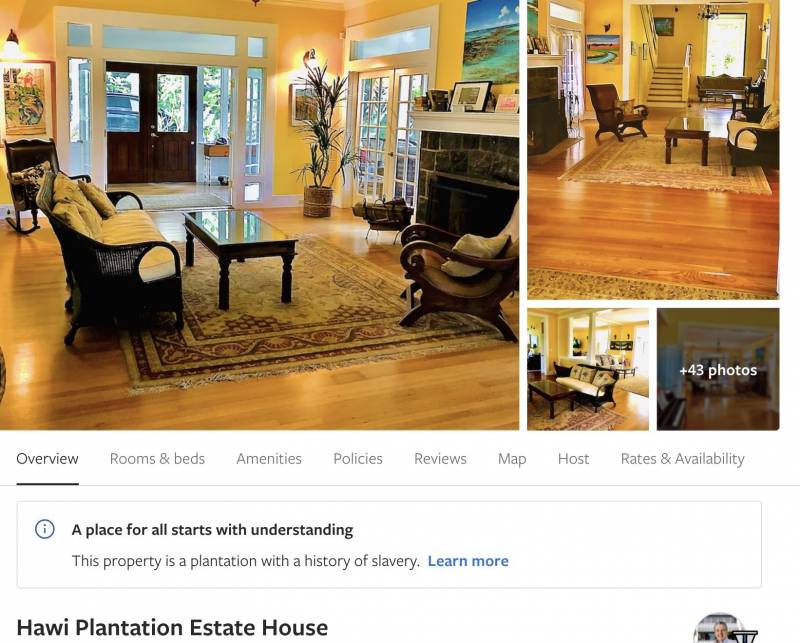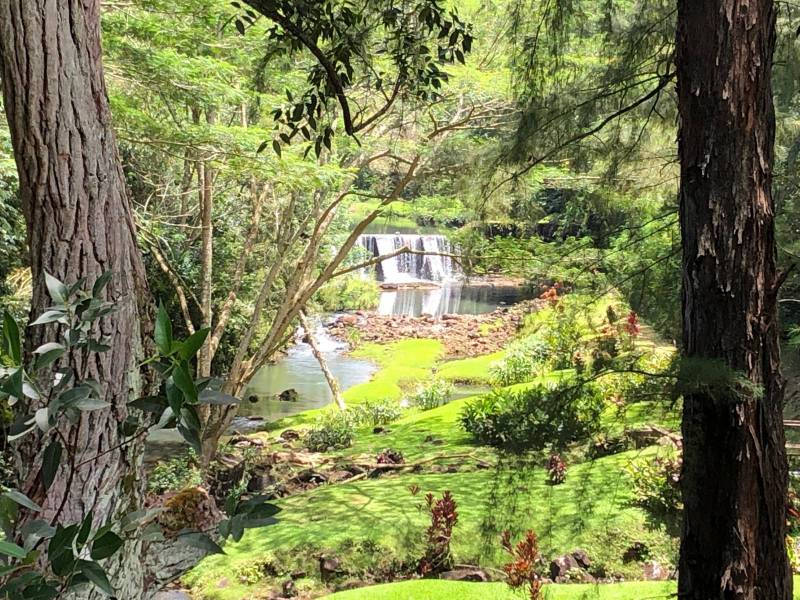A property manager recently alerted me that VRBO.com, the platform a short term vacation rental ignores at their peril, has recently implemented software that flags plantation-era homes, including those in Hawaiʻi, with warning language about slavery.

VRBO is wrong: Hawiʻs licensed B&B is a beautifully restored plantation managerʻs home — with NO history of slavery
Now if VRBO wanted to highlight Hawaii plantation vacation rentals with a caveat about the role of plantation business owners in the overthrow of the Hawaiian constitutional monarchy, I would have little argument. But to quote VRBO “A place for all starts with understanding.” So letʻs get our history straight.
Sugar, Pineapple and the Legacy of Plantations in Hawaiʻi
Plantation-era homes and their architectural style have a real following and so are highlighted as such in listings. Many of our communities and street names include the word “plantation” in reference to the history of sugar and pineapple plantations in those locations.

Type the word “plantation” into the Hawaii Life websiteʻs search bar and this is what you get!
Why is VRBO wrong about tagging these properties with a warning about slavery?
While plantation working conditions in the late 19th century were far from enlightened, the early foreign landowners in Hawaiʻi had a different business model than did Southern continental landowners for their plantations.
The local population having been decimated by disease, an imported workforce was needed as export agriculture expanded in Hawaii. The companies brought in workers from China, Japan, Korea, the Philippines and as far as Portugal, paid them wages and at the same time owned all the businesses where those hard-earned wages would be spent, from grocery stores to cinemas in the 20th century. The plantation owners tried to keep labor from organizing by segregating workers into ethnic camps. But by the time kids got to school everyone was mixing, and the multi-cultural Hawaiʻi of today is, in part, a result.

This listing, a plantation-era home on Old Halaula Mill Rd in Kohala shows typical single wall construction and intact details
As plantations became uneconomic in the later 20th century, many of the workers found employment in the burgeoning tourism industry. In Kohala, where the Plantation House featured in the VRBO listing above is located, when the camps shut down the workers were given the option to buy a home, which were moved to the locations along the main roads where you find them today.
Renting or Buying a Plantation-Era or Plantation-Style Property

Waterfall over Stone Dam on Wai Koa Plantation, a 528-acre agricultural listing on the North Shore of Kauai
The word “plantation” referring to the style, history, address, or community of a property you want to rent or buy in Hawaiʻi should not deter you. But understanding the history of the place you choose to stay or buy is a great first step towards understanding the complexities and sensitivities of modern Hawaiʻi.


Julie Keller
May 13, 2021
Thank you for this Beth!
We have a kuleana to this land and its history: to care for it, to respect it, and to represent it properly.
Beth Thoma Robinson, R(B)
May 13, 2021
Thanks, Julie, completely agree!
Jann Buckner
May 21, 2021
thank you for the clarification.
I appreciate learning Hawaiian history, especially how it differs from the mainland